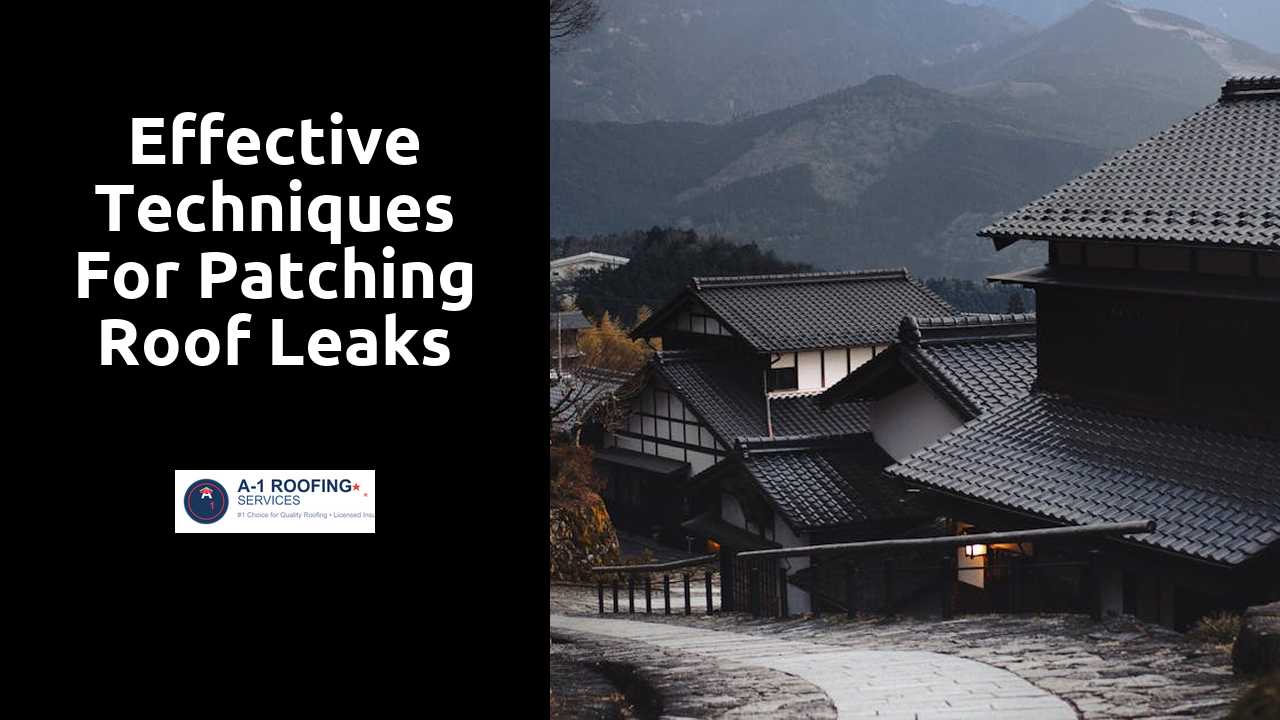
Effective Techniques for Patching Roof Leaks
Table Of Contents
Choosing the Right Materials
Selecting appropriate materials for patching roof leaks can significantly affect the longevity and effectiveness of the repair. Various roofing materials are designed for different types of roofs and environmental conditions. Asphalt shingles, metal sheets, and rubber membrane are popular choices. It's essential to consider the specific needs of your roof type, as well as the weather patterns in your area. Additionally, high-quality roofing sealants and adhesives can enhance the bond and durability of repairs, ensuring a longer-lasting solution.
Understanding the various types of roofing sealants is crucial when selecting materials for repairs. Some sealants are formulated for specific roofing materials, such as asphalt or metal, and provide superior adhesion and flexibility. Other options, like silicone or polyurethane, can offer exceptional waterproofing capabilities. Always check the manufacturer’s specifications to ensure compatibility with your existing roofing materials. Investing in the right sealants can prevent future leaks and save on costly repairs in the long run.
Discover more here.
Different Types of Roofing Sealants
Several options are available for roofing sealants, each tailored for specific needs and surface types. Silicone sealants offer excellent flexibility and durability, making them ideal for flat roofs. These products can withstand extreme weather conditions, including heavy rain and UV exposure, which extends their lifespan. Another option is polyurethane sealants, known for their strong adhesion and resistance to moisture, making them suitable for both sloped and flat roofing applications.
Acrylic sealants present a cost-effective alternative for minor repairs. They are easy to apply and typically water-based, allowing for simple cleanup with soap and water. However, they may not be as durable as silicone or polyurethane sealants when exposed to harsh elements. For metal roofs, butyl sealants are a popular choice due to their strong sealing properties and ability to conform to the surface. Each sealant type provides unique advantages, making it essential to select the one that best suits the roofing material and the specific conditions of the repair.
Safety Precautions While Repairing
When tackling roof repairs, prioritizing safety is essential to prevent accidents and injuries. Wear appropriate personal protective equipment, including gloves, safety glasses, and sturdy footwear with good traction. Harnesses or safety ropes may also be needed, especially when working on steep slopes. Ensure that your tools are in good condition and easily accessible to minimize the risk of falls.
Evaluate weather conditions before beginning any repair work. Avoid repairing a roof in wet or windy conditions, as this increases the likelihood of slips. Additionally, clear the work area of any debris or obstacles to create a safe environment. Be mindful of electrical hazards, especially if working near power lines or during electrical storms.
Guidelines for Working on a Roof
Prior to beginning any work on the roof, it's essential to inspect the area for hazards. Check for any unstable or damaged sections that may pose a risk. Ensure the roof surface is dry and free of debris. A firm footing is vital; consider using rubber-soled shoes for better grip and stability. Clear the surroundings of any potential obstacles that could lead to accidents during repairs.
Always use appropriate safety gear, including a harness and a hard hat. Set up scaffolding or ladders according to safety standards to provide a secure working platform. Avoid leaning too far over the edge to prevent falls. Having a partner nearby can be beneficial for additional support and help in case of emergencies. Follow all safety guidelines established for roofing work to protect yourself and others while performing necessary repairs.
When to Call a Professional
Homeowners may encounter situations where DIY repairs become too complex or unsafe. If the leak source is not easily identifiable or extends over a large area, professional intervention might be best. Complications can arise from extensive water damage or the need for specialized equipment. Professionals possess expertise in identifying underlying issues that might not be visible to the untrained eye.
Additionally, safety should always be a priority. If accessing your roof requires significant elevation or if the weather conditions are unfavorable, it is wise to seek help from professionals. They are trained to manage high-risk situations effectively and have the proper safety gear. Maintaining the integrity of your home is essential, and sometimes expert assistance is necessary to ensure long-lasting repairs.
Recognizing Complex Repair Needs
Some roof leaks may have underlying issues that are not immediately visible. Signs of complex repair needs can include widespread water damage, large stains on the ceiling, or sagging sections of the roof. These indications suggest that the integrity of the roofing structure could be compromised. If multiple leaks occur in different areas or if repairs seem ineffective, it may point to a larger problem requiring a professional assessment.
Homeowners should also be cautious of mold growth and mildew, which can thrive in damp areas caused by prolonged leaks. Inspecting the roof's flashing, underlayment, and structural decking is essential for determining the extent of the damage. If the repairs seem beyond a simple patch, consulting with a professional roofing contractor can provide a clearer understanding of necessary steps and possible solutions.
Related Links
Understanding the Cost of Roof RepairsDIY Roof Maintenance Tips for Homeowners